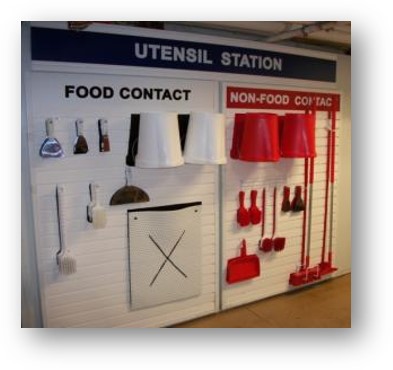
Food safety compliance
Make sure it is your main priority.
February 13, 2023 | By Richard Kunst
 Photo: Seventyfour / adobe stock
Photo: Seventyfour / adobe stock 
Photo: Seventyfour / adobe stock
Process non-compliance is a mere nuisance within many manufacturing environments. In the food and beverage industry; however, the consequences can be much more significant.
First, your company may get a lot of negative publicity from the media, which in turn can cause your consumer’s confidence about you and your products to erode. Also, the additional costs of dealing with a significant recall, implementing a big reverse supply chain logistic. It can be expensive, and could get worse if people became sick or worse.
Food safety compliance need to be your number one priority. Fortunately, it can be accomplished with some simple tips and tricks.
Visual management
Cross contamination is the enemy of any process but is the nemesis within the food industry. The biggest contributor of cross contamination is usually the result of employees trying to do the right thing, by keeping the area clean. However, those cleaning tools can be the tools of cross contamination.
Ensure that you colour code your cleaning tools and store them on clearly defined shadow boards. The colour codes should segregate the tools into the following categories:
Food contact – to be used to only clean areas where the food ingredients become in contact during processing.
Non-food contact – surrounding areas of the machine and workstation where you work but the food ingredients are not within a process
Floor – any devices used to keep the floor clean. I know that I would not want any dirt from the floor to ever enter the food stream.
Sanitation
If it is not moving then it is not producing, and when it is not producing, we are not making money. This is a simple statement understood by most leaders. It motivates them to encourage teams to maximize equipment uptime, which may lead to some cut corners, especially when it comes to sanitizing lines.
Doing a traditional change-over or set-up, teams should be employing the methodology of single minute exchange of dies (SMED). Picture the set-up transition like the letter “U”, where the bottom of the “U” is the machine being inactive, and using SMED to make the set-up transition more like the letter “V”.
Completing scheduled sanitation, a “V” scenario may not be completely desirable if team members are cutting corners during the process. SMED methodologies can and should be applied. Engineer your sanitation process using time studies, workflow diagrams, and pictures of where and what to clean, and what it should look like.
Unfortunately, in many cases bacteria is invisible, therefore, due diligence will be required. As technology continues to improve, automated clean In place (CIP) makes the job easier, more reliable and predictable. However, operations should remember that just because a process can be automated, does not mean that it is more efficient.

Photo: Richard Kunst.
Alarm clock for the human brain – TPM
Consider TPM as the alarm clock for your team member’s brains. Ultimately, the last line of defense, but a very powerful one, when followed.
Over the years TPM has evolved:
Total Predictive Maintenance – Operator self-checks the equipment.
Total Productive Maintenance – Operator self-checks plus minor adjustments and lubrication.
Total Productive Management – all the above but expanded to encompass the entire work area including documentation.
Sensors, computers and technology are great, but when it comes to TPM, rely on the human hand. The human hand is the most sensitive instrument on our planet and is why we want a human hand to be the instrument to check every square inch of the equipment.
There are many TPM software programs on the market and we have a plethora of sensors to measure “noise, vibration, heat and harshness,” but they lack that human hand other than to click the mouse, which then make it easy to “mouse click whip” compliance without doing
physical checks.
Old fashioned TPM using a proper checklist, where the check items are numbered and perhaps numbers placed on the equipment, may seem archaic, but we have that human hand involved. Ultimately a checked document is signed or initialed by the team member to
acknowledge completion.
Yes, it is easy to “pencil whip” these checklists also, but leaders need to audit the checks in association with the team member, to ensure compliance, but it also becomes a great opportunity to enhance training.
Food safety compliance is your number one priority and following these simple tips and tricks will give you some peace and serenity.
___________________
Richard Kunst is an author, speaker and seasoned lean practitioner based in Toronto, who leads a holistic practice to coach, mentor and provide management solutions to help companies implement or accelerate their excellence journeys. You can reach him at www.kunstsolutions.com.
